
What Divides Psychology & Typology?
Carol Shumate, February 5, 2014

Three Jungian scholars among others have addressed this issue within the past decade: Sonu Shamdasani, John Giannini, and John Beebe. I can’t do justice to the complexity of their ideas here, but I’d like to summarize a few of their points.
Shamdasani (2003), the editor of the Red Book, describes how controversial Psychological Types was from the beginning, garnering both rave reviews and excoriating criticism. Jung’s effort to reconcile Freud’s and Adler’s systems to each other via his concept of typology had led him to suggest that some psychologies work better for certain types of patients because of their consonance with those patients’ respective typologies and not necessarily because the psychological approach is superior to others. Shamdasani relates how unwelcome this conclusion was in the psychological community: “Psychologists were reluctant to view the theories which they had claimed had universal validity as merely the expression of their type, and correspondingly relativized” (p. 83). Jung did not help matters when he made comments implying that a scientific psychology was not possible: “Nowhere does the observer disturb the experiment more than in psychology. Because of this one can, so to speak, never establish the facts sufficiently” (1954, para 160).
Jungian analyst John Giannini (2004) proposed another possible reason—a type difference between psychologists (especially Jungian analysts) and the system of typology itself—in the chapter of his book titled “Jung’s Divided Family.” Analysts, he observes, tend to be introverted and intuitive, and “intuitively oriented analysts [see] typology to be a sensate concern in which detail and categorizing dominate” (p. 483).
John Beebe, like Giannini, also sees Jung’s Chapter X as the product of sensation, specifically introverted sensation:
It is clear that Jung has precisely observed people, compared his impressions to his memories of other similar people, noting likenesses and differences, until the grouping of people into types according to their dominant consciousnesses could be satisfactorily achieved—by definition, the work of introverted sensation. (2012, p. 64)
Beebe, however, believes that Jung’s preference for intuition also played a role in the alienation of Jung and his typology from the rest of the psychoanalytic community, pointing to a “cultural devaluation of introverted intuition” (p. 62). In a remark that links back to Shamdasani’s point, Beebe explains how Jung’s concept of intuition, and his trust in it as a mental process, was enough to ensure his separation from contemporary as well as future colleagues:
Breaking with psychoanalysis and entering into the active imagination discoveries recounted in the Red Book led Jung in his subsequent writings to embrace more fully the reality of the irrational. In so doing, he was disavowing an adaptation that had begun to feel false to him—one that had been chosen to suit the collective, rational, scientific climate of his day rather than his own intuitive glimpses of the irrational force of the unconscious. (2012, p. 62)
I find all of these insights to be greatly illuminating, but I also wonder if Jung’s own rigorously dialectical style might have muddied the waters. When the terminology of Jung’s Chapter X gained acceptance in psychological circles, Jung recoiled against its popularity and issued a strongly worded warning against using his concepts in a robotic way in his foreword to the Argentine edition:
This regrettable misunderstanding completely ignores the fact that this kind of classification is nothing but a childish parlour game… My typology is far rather a critical apparatus serving to sort out and organize the welter of empirical material, but not in any sense to stick labels on people at first sight. (1934, p. xiv)
I suspect that Jung’s cautionary relativism, his desire to hold the tension of opposites and never to go overboard in any direction, may have paradoxically sent him a little overboard in his warning about “labels.” Who would want to risk being accused of playing “childish parlour games”?
Of course, there are probably many other reasons for the alienation, and I am obviously biased toward believing that Jung’s typology deserves more attention from psychologists and Jungian analysts. Jungian analysts and academic psychologists no doubt have a different set of reasons for their choice of focus.
What reasons do you see for the divide?
References
Beebe, J. (2012). Psychological types in Jung and Freud. Jung Journal: Culture & Psyche, 6(3), 58–71.
Jung, C. G. (1934/1971). Foreword to the Argentine edition of Psychological types. In H. Read et al. (Series Eds.) The collected works of C.G. Jung (R.F.C. Hull, Trans.) (Vol. 6, pp. xiv – xv). Princeton, NJ: Princeton University Press.
Jung, C.G. (1954). The development of personality. Princeton University Press: Princeton, NJ.
Giannini, J. (2004). Compass of the soul. Center for Applications of Psychological Type: Gainesville, FL.
Shamdasani, S. (2003). Jung and the making of modern psychology: The dream of a science. Cambridge University Press: Cambridge, UK.
Header Image
Jylian Gustlin, “Caelum 3,” 2020
.



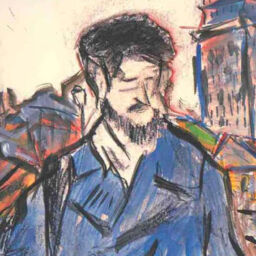
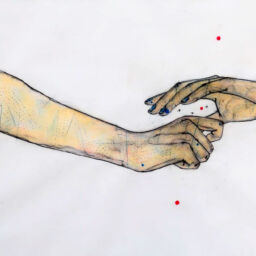
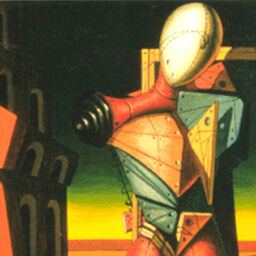
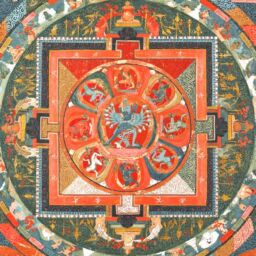





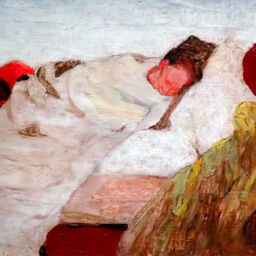





On a completely different note, in regards to the discussion on introversion being necessarily associated with the unconscious, to Jung, I’d have to say that strike me as true. That said, Carol Shumate is right that nearly everything Jung says should be regarded as potentially relevant to the dynamic between consciousness and unconsciousness.
As to whether introversion had a special place, well I would tentatively say yes, much as intuition had a special place. By definition, intuition perceives by means of the unconscious. By special place, I do not mean to suggest he thought one function is more important than another, but merely that intuition stands more directly in relation to the unconscious (which of course does not mean that an intuitive type “understands” the unconscious better, whatever that means, which I’d suggest Jung would’ve viewed as type-dependent).
A main part of the relation of introversion to the unconscious is perhaps directly stated here:
“The degree of psychological efficacy belonging to the primordial image is determined by the attitude of the individual. When the general attitude is introverted as a result of the withdrawal of libido from the outer object, a reinforcement of the inner object or idea naturally takes place. This produces a very intensive development of ideas along the line unconsciously traced out by the primordial image. In this way the primordial image indirectly reaches the surface. The further course of intellectual development leads to the idea, which is merely the primordial image at the stage of intellectual formulation.”
Further, if we look forth at the function we might expect to correspond most to the outer object, namely sensation, Jung’s remark is that introverted sensation basically is not in whole obedience to the nature of sensation, preferring to perceive the subjective disposition to the stimulus in favor of the object which stimulates. He further says that the perception in introverted sensation is altered at the very source:
“The subjective factor of sensation is essentially the same as in the other functions already spoken of. It is an unconscious disposition, which alters the sense-perception at its very source, thus depriving it of the character of a purely objective influence”
Basically, the subjective factor involves both the consciousness (whose focal point is the ego), and the unconscious dispositions reflecting one’s unconscious attitudes towards things, so in this sense introversion has a certain definite relation to the unconscious. Of course, one isn’t directly aware of the unconscious necessarily, particularly if not disposed intuitively, so in the case of a sensation type, this unconscious disposition is perceived when consciousness is stimulated by sensation. In the more intuitive types, it would seem that perhaps the focal point of consciousness may receive less attention, though they may be highly attuned both to the personal and collective unconscious, the former containing hallmarks of their subjective psychology (e.g. Nietzsche).
With the intuitive extravert, probably awareness of relatively unconscious contents is likely high, but is probably pursued only in relation to how these contents may contribute to existing outer conditions, even if in surprising ways.
It’s basically impossible that Jung thought the unconscious is active only through introversion, in that even from the standpoint of conditioning one’s aims willfully, the extraverted intuitive type is clearly tapping into the unconscious.
This question is rich for speculation, and I found the opening commentary quite informative, and thank the author for providing it.
It strikes me that one glaring point has never been quite mentioned, though alluded to certainly, which is that Jung’s book Psychological Types is far from an implementation of type theory, which is to say, it is theory without methodology for type diagnosis. Those who cannot appreciate the difference would best look at the difference in science between writing a bunch of equations about particles’ physics and then recognizing the relevant laws at work in experiment, making adjustments to see if the laws still carry merit even when the data behaves unpredictably, and so forth. There is simply no need for academic psychology to eschew theory when science itself often forays into heavily theoretical considerations which leave the empirical to speculate in seemingly promising ways, but what is needed is to not make direct empirical claims without having a firm method (and again, sometimes it seems like the theory speaks for itself, but this is only true if all you want to do is theorize, as some of us certainly can attest to wishing, not if you wish to practice).
It’s clear that whether it be Jungian analysts and scholars or outside enthusiasts who try to implement type theory, people come to different answers. And I think that’s more because there are legitimately different directions to take a theory which did not give a method for implementation, and implement it.
And herein lies the question: what kinds of answers should we strive for and expect in terms of how we can use Jung’s theory? Carol Shumate helpfully contrasts the sensation-centric and more intuitive mindsets, noting that empirical type diagnosis might need a certain sensation mindset. Speculative intellect can produce new possible frameworks, and can go into symbolical views of type, but this has its own purpose, yet some seem to confuse the symbolical for the exacting sensuous, treating them as if they are roughly the same.
When speculating, it’s good to remember that Jung himself seems to have changed his views on his type, from sensation and thinking to intuition and thinking being his predominant orientation (excluding their orders for now). This may be pertinent to the difference between Jung’s apparent method for categorizing types early on and what his type theory “really means” – perhaps it really should be used more symbolically. Dr. Beebe’s model sort of begins to put this into practice, it seems, by viewing the individual as a sort of drama consisting of different characters, each oriented by a function-attitude, capturing their respective dynamics in his 8-function-attitude model.
It is actually I’d think very pertinent also to this question to note that it’s not all of Jung’s types which haven’t gained wider recognition, but rather his introvert/extravert types, in some form or another, have become more or less accepted. However, his function-types have not received the same attention. Why? Partly, I think, because there was a sense in which his way of treating functions diverged more from a truly standard psychological approach, and his own writings show that he treated these two kinds of types very differently. In particular, note that introversion and extraversion are definable directly as attitudes/orientations: negative/positive interest in the object. In fact, it is somewhat more indirect to talk of a *process* of introversion, whereby a subjective/psychic datum is created, and the standard concept of introversion refers directly to the nature of an individual’s static attitude towards objects.
By contrast, the functions are processes – they are anything but static attitudes, and instead are defined as forms of psychic activity. One can then theoretically talk of being “oriented by” a function, but Jung hardly defined what such orientations are directly.
One may argue this and say, no, Jung did define what a function-orientation is and say it entails sovereignty of the “principle” of a function in the individual’s readiness to engage contents. Yet, here is the subtle point: the principle of a function still speaks to what it precisely is as a process (the nature of the knowledge it transmits to awareness), not as an orientation of the individual. And what’s more, everyone must invariably undergo all the processes in order to transmit the contents relevant for life into awareness. He never really says *what it is about the individual’s attitude* which signifies a priority of a particular function’s principle, only alluding to it in some or another way. Rather, he does define what the principle of a function as a process is clearly, and what it means to employ that process for its own sake, not fused with other functions to a high enough degree as to violate its principle.
By contrast with everyone needing to employ all the functions, everyone need not “be” an extravert, because even if we can indirectly define introversion and extraversion as mental processes that we must all undergo, if we really look at what introversion is, it has a direct definition as a psychological attitude, which can be linked to a predominance of one process over another but also exists in itself as a direct psychological attitude of negative interest/relation.
Note that this just *does not apply* to the functions: thinking simply cannot be defined as a negative interest in feeling (is seeking dispassionate philosophical knowledge a negative interest in performing evaluations – no, rather, these are distinct forms of judgment which simply cannot occur simultaneously). Rather, it has its principle, that of reason and the linking of concepts through logical and dispassionate means, for instance so that we allow the conceptualization to occur synthetically, building on itself rather than simply reporting categories for sensuous facts or reporting possibilities and describing intuitive visions. This is better categorized, if we think about it, as a form of philosophical knowledge representation than a form of psychological orientation. Yet it’s possible for people’s psychologies to suggest certain forms of knowledge representation as more or less natural to them – and such speculation is part of what Jung’s Psychological Types appears to be about.
Still, the point remains that with introversion/extraversion, they are defined harmoniously both as process and attitude, whereas with functions, it appears the orientation/attitude is implied rather than empirically defined, even if the actual processes can indeed be identified empirically. Perhaps what’s missing is that the psychology behind the functions is relatively unstudied. I noticed when I read James Hillman on the feeling types that he added a lot of interesting psychology to the feeling type which just wasn’t present in Jung’s exposition, which seemed more to leave what the “attitude” of a feeling type is to the imagination.
On the other hand, we actually could leave the direct, empirically observable processes of transmission of certain knowledge-forms to awareness, the standard functions, and instead view the functions more intuitively. This would hardly be unappealing, I’d think, to Jungian analysts, in reference to Carol Shumate on how the more sensation-centric point of view may be turning them off from typology.
Are the functions best viewed as a symbolic compass that can incarnate in many possible ways? Does Jung’s change in his own view of his type (apparently) ever since publication of Psychological Types suggest that we see his work in a different light, in the sense that he perhaps discovered his fuller place within the world of psychology as he went on in life? Is the desire to bring unity to the individual’s oppositions not something Jung already was thinking about when he wrote Psychological Types, noting the need to bridge the unconscious and the conscious personalities with the inferior function as the gateway to the former? And must we not note that Jung believed such a unity of opposites occurs irrationally, not rationally (through classifications and categorizations)? Seeing them truly symbolically means to see their application intuitively, as possible ways of seeing life, rather than as sensuously fixed factually empirical entities that we use to diagnose people. As Jung himself writes, the equally independent intervention of another function sacrifices the principle of the former, and this certainly applies to his concepts of sensation and intuition.
In any case, I do think that Jung’s modification of his own view on his type at least suggests that how he presented his theory might just possibly not be how it is best used (note that there is evidence by various scholars to suggest not only was sensation not one of his preferred functions, but that intuition may have been dominant – Marie-Louise von Franz and Dr. Beebe are examples of such scholars, I think), in that surely the typology of someone presenting a theory about typology is relevant to how its ideas are to be used or evaluated, at least if one does wish to stay with the “spirit” of his work (although it is legitimate to conduct one’s own investigations and take the theory in other directions if they seem promising).
Speculation from an academic research scientist working at the intersection of physics and chemistry:
Perhaps another (subconscious?) reason for the divide between Jungian analysts and psychologists can be attributed to academe’s value system: It’s my sense that academic psychologists strive to be associated with the so-called “hard sciences.” After all, that’s where most of the funding is, and many academics measure prestige in terms of grantsmanship. As a result academic psychologists busy themselves measuring data and quantifying traits. And, it would appear to me that they do this without motivation by any theoretical framework, e.g., the widespread use of the empirical Five-Factor Model.
Yet the idea that empirical data is somehow more scientific than theory is a misunderstanding of how science works, since science proceeds via an interplay between theory and experiment. Experimental data without a theorectical context is virtually worthless.
Curiously that point of view—the idea that empirical data is more valid than theory— retarded the advancement of the hard sciences, as the following quote from the late New Zealand physicist Sir Paul Callaghan emphasizes:
“From the standpoint of the 21st century, the idea of a theoretical model that we test indirectly through its predictions seems entirely reasonable [to physicists]. But in the 19th century, theoretical physics was in its infancy, and there were those who found it distasteful to speak of atoms and molecule when no one had seen such entities. That distaste was exemplified by Ernst Mach… . To Mach, scientific laws had to be based on what was directly measurable, not on fanciful theory—on the surface a reasonable position that might well resonate with people of common sense. But science is … a means of discovering truths that defy common sense. It is, after all, common sense that the sun revolves around the earth.” [1]
In sum, developing protocols to test the implications of “soft” Jungian theory might be deemed unrewarding by psychologists, or may be simply too difficult, as one cannot see nor quantify the Jungian functions, nor can one easily quantify the unconscious.
[1] P. T. Callaghan, Translational Dynamics & Magnetic Resonance Oxford University Press, 2011 page 1.
At the XIX International Congress for Analytical Psychology 2013 I discussed this division with Jungians from different Jungian societies. Summarizing what I picked up: 1) Typology is very hard to learn. 2) They would like to know more about typology, and the concept of type-in-depth is an inspiring development. 3) But there is so much to know and to learn in many different fields of Jungian psychology today and time is also a factor. Analytical psychology has many areas of theory of practice. There is a lot of expertise, and so much to read, to learn and to practice.
My conclusion after the congress is that although typology is a cornerstone in Jung’s opus, it is not a cornerstone in clinical practice. However, my ‘eight-function poster’ won the first prize in the poster competition at the congress, and I think this was in appreciation of its in-depth perspective on typology.
Obviously one obstacle in the intuitive Jungian family is all the sensation work you have to go through if you really want to understand typology. But with the Eight-function Model, this situation might change, because the archetypal layer in the model is a perfect door opener to typology for the intuitive type – especially the Ni type.
I am an INFJ and I jumped into Jungian psychology in 2004, read about the Eight-function Model in Papadopoulos Handbook of Jungian Psychology in 2006, and met John Beebe at a workshop in CPH 2008. He posed thought-provoking questions like: How are you being heroic with your primary function (Ni)? —parental with your auxiliary function (Fe)? etc. By asking such questions, he gave me new tools for understanding myself. E.g, why my puella/trickster ways of using my thinking function cause trouble when I try to express myself through thoughts; becoming both creative and vulnerable, and if not understood, the trickster energy in my shadow is always just around the corner.
The opportunity to link my understanding of a function to an archetypal complex of processing that particular function opened the door not only to the meaning of the functions of consciousness but to the coherence in Jung’s psychology. Today I use the model and the same questions on a daily basis in my clinic. And I am writing an eight-function guide book in Danish. The challenges I experience are as follows:
• Keeping it simple. One easily gets caught up in either too many details or too much complexity or both.
• Reconciling Jung’s diagram based on opposites with MBTI personality types. I am working on a ‘converting scheme’ to solve this problem. Does such a scheme already exist?
• Avoiding “labeling” – As an analyst, you have to very much aware of using labeling, whether it is a psychiatric diagnosis or a type code.
• The lack of targeted colloquia or conferences – I’d like to see more articles showing applications of the Eight-function Model in analysis, films, texts, capacity building, strategic planning etc.
• Incompatibility with the research orientation of academia
• Creating a common language for practicing type-in-depth in different levels, beginners and advanced
Like Saul Goodman in his comment, I also think, that it is too complicated to speak about the unconscious to the layman. I think we should stay with questions like John Beebe’s: how are you heroic, parental, creative/vulnerable etc. with a particular function carried by a particular archetype. If we nurture our clients this way – whether we are psychological type practitioners or Jungian analysts – we can, I think, make typology and psychology meet on the bridge.
Personality Type in Depth is an extraordinary journal for filling up the gap between psychology and typology. In the journal we can share our experiences and opinions. I think we should do more networking to find a common language and share ideas and experiences.
Your key question was “Why the separation between [depth] psychology and psychological type?” I see three major practical realities that address this.
First, the MBTI(r) and other instruments don’t actually measure for preferences between the 8 Jungian functions. Instead, they measure for preferences between subsets of those functions. For example, the “sensing/intuition” questions are much more oriented toward Introverted Sensing vice Extraverted Intuiting and the “thinking/feeling” questions are more oriented toward Extraverted Thinking vice specific facets of the two Feeling functions. What frequently happens is that people who prefer Extraverted Sensing respond sensing by checking the non-intuiting response and feel uncomfortable with the description of how they use Sensing as a perceiving process in their feedback session. People who prefer Introverted Thinking respond “non-feeling” and don’t hear much about how they use their Thinking in their feedback session. Thus, typology instruments are not connecting with the eight functions. The fact that they are popular with executives (who 60% or more prefer Extraverted Thinking and often Introverted Sensing as well) is consistent with what they are actually measuring…
The second issue I see is that we have not actually modernized Jung’s “descriptions” of the eight mental processes, so we have no way of conveying the value of understanding them to our clients. For example, I have seen a huge rise in the recognized value of Extraverted Sensing in our culture with “extreme sports” and “just do it” promotions. How are Twitter, Facebook and cell phones impacting our Feeling function development?
The third issue is that Jung’s Typology was a developmental model (each function could and would “develop” over time) and the psychological typology models are “fixed” in nature (once an ENTP, always an ENTP).
Margaret and I have translated our understanding of the development of the functions into measurable “mental skill sets” that are relevant to today. Our descriptions of each of the functions at each of several levels of development are available in our booklet “Functions of Type” (available on Amazon) and our questionnaire and feedback booklet “Function Skills Development Assessment” (available on-line at the Breckenridge Institute).
Here is my perspective on some of the points that have been raised here and elsewhere, and elaborating on what some have said:
• Labels – I would follow Beebe in considering that Jung’s types are not types of people but “types of consciousness,” (2004, “Understanding Consciousness through the Theory of Psychological Types”), so we are not labeling people but mental processes in using Jung’s terminology. Indeed, psychologists and analysts who do not use typology run a greater risk of stereotyping patients than those who do, for example, by pathologizing a patient’s expression of his dominant function if the analyst has that function in shadow. This was in fact a motivating factor in Jung’s study of typology: he wanted to understand the antipathy of Freud and Adler toward each other’s psychology (“On the Psychology of the Unconscious,” 1917). He mentioned this again in MDR.
• Expert Agreement – We may never be able to reach full agreement on the functions because we must use our own most conscious processes to analyze consciousness. This too seems to be a central point that Jung was making with his typology. Each type views, experiences, and expresses each of the functions differently than each other type. Far from being a reason not to study and use typology, this factor seems to constitute an argument FOR using it to study ourselves and our own filters and those of others—with the understanding that we can never reach ‘truth’ but can only reach a vague apprehension of it. Acknowledging this factor mandates a continual cycling between studying the other’s perspective and reconsidering one’s own perspective, something like using a sextant for celestial navigation.
• Quantifiability – Types are not quantifiable, e.g., Jung’s typology does not purport to identify how much extraversion a dominant extravert has. Academic psychology prefers trait instruments to type instruments because traits are quantifiable and so results can be measured. Traits, moreover, can be improved, whereas types cannot be altered (psychologists cannot use therapy to change someone’s type), and so once again change can be demonstrated—a desirable research outcome. Types and traits have a lot of overlap and type instruments and trait instruments can be used together successfully, but they describe different aspects of personality and should not be compared.
Doug Wilde
Feb. 7, 2014, 13:30
To obtain Jung’s function-attitudes from MBTI data, one must follow Maresville’s Level 1 Orientstion dichotomy by combining the Briggs J-P attitudes with Jung’s E–I attitudes to generate “decoupling” attitudes: extraverted and introverted judgment Ej and Ij for the judgment goals, along with extraverted and introverted perception Ep and Ip for the perception goals. This is described in chapter 4 of my Springer (London) book “Jung’s Personality Theory Quantified” (JPTQ). In the context of Maresville’s article, this would then become Level 2 Decoupling. Following this dichotomy by Maresville’s “Nature” (his Level 2) immediately yields the eight function-attitudes as described in JPTQ Ch. 5. Maresville’s “puzzling” Level 3 is therefore not needed. The simple averaging formulas for the new latter two levels are given in JPTQ. Spreadsheets to perform the computations can be downloaded free from my web-site . The results can be presented graphically on two 2X2 rectangular graphs. Maresville’s spherical representation can also be used, but two spheres are needed, one for the four judgment function-attitudes and one for the four perception function-attitudes. Two spheres are required because decoupling makes the two domains completely independent.
I think that Adam’s points are absolutely spot-on! Both speak to major ‘pragmatic’ issues that would inhibit Jungian psychoanalysts from using the model. In addition, his second point, that “it is very slow work for any of us to learn, integrate, and be able to recognize Jung’s eight types of consciousness …” is probably the main reason why MBTI-oriented type practitioners likewise tend to shy away from bridging the gap to depth psychology.
In addition to the reasons summarized in Carol Shumate’s article, I would propose two more.
1) The theory of psychology types is far clearer and easier to apply in therapy if one accepts Isabel Briggs Myers’ interpretation of Jung’s comment that the auxiliary is “different in every respect” from the dominant function. Otherwise, the number of possible types becomes unmanageable and the sense of adaptive checks and balances is lost. I would wager, however, that Myers’ work is almost never required reading in Jungian analytic training programs because she had no credentials in depth psychology. Absent Myers’ clarifying explanations, Jung’s work on types is quite daunting to apply.
2) It is very slow work for any of us to learn, integrate, and be able to recognize Jung’s eight types of consciousness, and especially if one is working solely from Jung’s and von Franz’s descriptions of the types. Jungian therapists and analysts have to find ways to take care of their patients right away and can’t wait for type understanding to kick in. I suspect that many adapt to being therapists using other modalities and then, finding some success with these other tools, never look back to their fledgling attempts to understand and work with type.
Nevertheless, there are certainly a substantial number of Jungian analysts and Jungian-oriented therapists today who do work effectively with type.
Dear Carol,
You seem to have asked an historical question but then partly abandoned it to opinion.
As a researcher in the historical aspects of type, I think the comments you attribute to Shamdasani are the most pertinent. I disagree with comments on Jung’s language; it seems to me that Jung’s style is consistent with that of his contemporaries, a style that no longer exists. I also disagree with the allocation of a particular function to Chapter X, or that Jung was necessarily a supreme observer. Whatever Jung’s type may be, and he had his own opinion on that, he was treated by reviewers at this point as an introverted thinker.
It’s nice to like his typology and all that, particularly in the current environment where the MBTI etc has been around for so long. but the reality is that typologies were controversial, as were also traits at the time Jung ids writing. Jung distanced himself from the classical temperaments, and his use of the term “function” was criticised by many and its background in phrenology and elsewhere was raised.Even those who liked types didn’t necessarily like his version, McDougall for instance.
So a lot of people didn’t find Jung’s ideas convincing. Often these people liked his Word Association experiments and reference to them is made even in the 1950s. I would disagree that Jung thought that a scientific psychology wasn’t possible, simply that one based on logical positivism had severe limits. He recommended Popper’s The Logic of Scientific Discovery at one point, which is interesting.
I wish also that there would be less reference to the Argentinian foreword, as Jung says similar things elsewhere. In some respects, he’s probably commenting on the attempts to measure his ideas in the 1920s and 1930s, which were somewhat abortive.
It’s important to note that Jung did not want to found a school and actively resisted the notion and it seems that individuals found their own way. There are valuable discussions in the Journal of Analytical Psychology about how in England type was essentially not used, and Klein, Bion etc were favoured.Jung used his typology in his seminars up to the end of the 30s and mentions it even in Psychology and Alchemy. Yet there’s a view that he discarded his types. Perhaps he found Alchemy etc. more interesting.
My Masters’thesis in 1995 investigated the lack of acceptance of Jung’s ideas and the MBTI. Since then I’ve written on associated topics and recently presented a series of webinars for APTi on Fundamentals of Personality Type which addresses the issues raised here. I used “personality type” because I was talking also about Keirsey, Kretschmer, Spranger etc. I doubt Jung would be pleased to have his ideas presented as a personality typology myself.
Regards
Peter Geyer
The disadvantages with typing according to the book called testing people at work is that:
1. It ignores a great deal of empirical evidence that human personality is normally distributed and that people are not divided into just a few categories.
2. Dividing can be misleading, some dissimlar people can be grouped together, while others who are quite similar can be artificially separated.
3. The disadvantages off labelling, is the difficulty changing the perception of others ones obtained a stereotype.
And from my point of view I think Jungs writing on psychological type is pretty much Ni, some would say Ti. But so far I can see is just Ti in terms of categorising, however how he present type is pretty much like a story as the text was playing images. The advantages with this approach is that it enriches the psyche given it the dynamic structure it deserves but problem is that it can be to abstract. Eventhough, Myers and Briggs manage to quantify it with the MBTI it still runs the problem presented above. Eventhough still usefull. The problem really becomes quantifying the functions and its dynamic.
The functions itself can be quantify however the dynamics is more difficult becuase of the statistical tool we use in psychology is for most based on linear model. Meaning comparing the data with a straigth line. Making dynamic very hard to grasp.
And as it seems from a study I have read, there is not perfect correlation of what the experts thinks of the different functions. It was a low correlation for something that should be so obvious. In terms of understanding what the functions means. And even more a of a problem is that we all have the eigth functions making it even more dynamic and even more difficult to quantify as developing a function that is not consciouss could be a result of a persons background a variable that cannot be controlled for during a study.
Because it cannot be quantify it cannot be standardised, if it cannot be standardised it cannot be generalised, if it cannot be generalised, it cannot be implemented and therefore the value of typology is than limited to few settings where the value of researching it can be measured in money. It is sad but true.
Sorry for my spelling, English is not my first language 🙂
Saul, Thank you for your comment. Yes, it’s distressing that Jung’s definitions of introversion and extraversion have been mostly overlooked. Even the DM-V almost succeeded in redefining ‘introversion’ to conflate it with neuroticism, and the Five-Factor Model also seems to imply this connection. And I can see how an avoidance of the unconscious crept in via Isabel Myers’ emphasis on ‘gifts,’ though I think we all owe her a huge debt for her work on the auxiliary function and the Indicator.
But here’s a question for you: Freud’s psychology focused on the unconscious, and that did not impede acceptance of his system–at least, not that i know of. It doesn’t seem that anyone today doubts the existence of the unconscious. So what connection are you making?
Also, are you saying the unconscious is only active via our introverted functions? I’m trying to understand what you mean when you say “Introversion in Jungian typology can only exist in relation to the unconscious.” I guess it seems to me that all of Jung’s concepts imply the interface of consciousness with the unconscious, but it sounds as if you feel that introversion has a special place in his scheme.
I think the disconnect exists largely due to 2 reasons
1. The definition of the word Introverted
2. That Introversion in Jungian typology can only exist in relation to the unconscious
Many people in the type community associate Introverted functions with the word “personal” which I think Jung didn’t intend. Also, in modern times the word Introversion has lost the precision that Jung had accorded to it (being associated with shyness) which does not allow typology to go as much in depth as Jung might have hoped.
Even if a type practitioner wants to explain to the layman the concept of the unconscious, since the unconscious is not exactly in favour in general they would risk losing the trust of the layman. Also, for the layman, explaining what Jung meant by Introversion might be too much to handle which maybe why type practitioners ignore it altogether (irrespective of their own views about the unconscious)
I believe that typology is of value to depth psychology only if the functions are viewed in light with definitions used by Jung which cannot ignore the unconscious